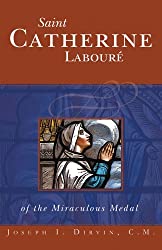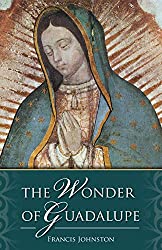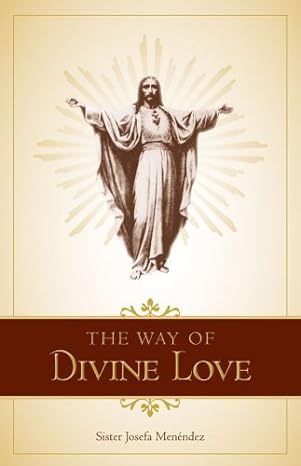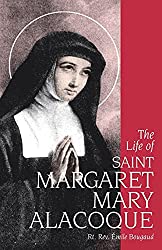
Introductory Remarks
Here we continue with the seventh part of our account taken from Bernard St John’s masterful 1904 book, The Blessed Virgin in the Nineteenth Century: Apparitions, Revelations, Graces.
The account is serialised at this site in ten parts, which you can easily navigate by clicking on this table of contents:
- Part I: The First Apparitions
- Part II: The Spring of Miracles is Discovered
- Part III: “Tell the Priests that a Chapel Must be Built …”
- Part IV: “I Wish People to Come Here in Procession.”
- Part V: The Miracles of Cures and Healing Begin …
- Part VI: She Said in a Voice that Trembled a Little: “I am the Immaculate Conception.”
- Part VII: The Miracle of the Lighted Candle
- Part VIII: The Last Apparition
- Part IX: After the Apparitions
- Part X: The Later Years
We note that we think Bernard St John’s text is a fine book indeed, well-written and clearly well-researched, drawing on many sources.
In addition to this series on Lourdes, the interested reader can also find extracts from Bernard St John on Our Lady of the Miraculous Medal, as well as La Salette (in a series starting here) and Our Lady of Pontmain (in a series starting here). We would also like to point the reader to a very fine modern book on Marian Apparitions by Donal Foley. This is a most important volume for us and thus we have reviewed it in great depth here — RB.
From Bernard St John:
Those who denied the supernatural character of the phenomena at Massabiello were exasperated at the turn things were taking.
Those who had believed that the manifestation at the Grotto of March 4th was to be the last of the kind saw their calculations completely upset by the one on the day of the Annunciation.
Among the adverse lookers-on was Baron de Massy, Prefect of the department, living at Tarbes. This functionary was to be the chief wire-puller in the scheme of opposition brought to bear upon the Lourdes phenomena in those early days.
As M. Boulard, Minister of Public Worship, was writing to him about this time on the subject of what was going on at Lourdes, he thought the moment had come for taking active steps.
Accordingly, he called on Mgr. Laurence, Bishop of Tarbes, with the object of getting the manifestations at Massabiello put a stop to.
But the prelate refused to interfere, his policy being to watch and wait.
In the perplexity of the moment, and in presence of the sublime manifestation of the 25th, which had had the effect of drawing people to the Grotto in greater numbers than before, the only expedient the Prefect could think of was that of declaring Bernadette mad.
His next step was to have her examined by a medical jury. The jury saw no sign of aberration of intellect in the little girl. Enemies had to wait.
There was another Apparition on April 7th, remarkable for the now well-known phenomenon of the lighted candle.
Dr. Dozous gives us an account of what then took place.
He at first saw Bernadette kneeling in rapt attitude with her rosary in her hands. Then he saw her begin her customary ascent on her knees to the spot beneath the wild rosebush.
For some reason or another she stopped short in this ascent and brought the lighted taper in her right hand beneath the open fingers of her left one.
The flame sped upward through the open fingers of her left hand, and with all the greater rapidity owing to a brisk wind blowing at the time.
A good number of people saw what was going on, and Bernadette would certainly have been saved from what was considered imminent danger had not Dr. Dozous interfered.
The medical man would not allow her to be touched or spoken to. He took out his watch and noticed that she remained in the same attitude for a quarter of an hour with the flame passing through her fingers and seeming to leave them uninjured.
At the end of about a quarter of an hour she continued her ascent up the rock. When all was over and she had come back to her place, and the inward light had faded from her face, the doctor asked to look at her left hand.
He took the hand she held out to him and examined it carefully. There was upon it no sign of the action of fire.
He asked for the taper she had held, lighted it, and put the flame for a moment close to her fingers.
He did the same thing more than once. Each time Bernadette quickly drew her hand away, saying, “You are burning me!”
Dr. Diday, of Lyons, one of the contradictors of the Lourdes miracles, alluding to this case of the lighted taper, and with the object of disproving its supernatural character, cites as an authority M. Hoffmann.
The argument he borrows is to the effect that persons under the influence of hypnotic suggestion become insensible to pain. But, as Mgr. Ricard in his book La Vraie Bernadette de Lourdes remarks, and as Dr. Boissarie had remarked before him, a medical man has no right to confound a lesion with the pain caused by that lesion.
He goes on to say in his work: “Bernadette in ecstasy might have lost all sense of pain, this being a phenomenon observable in nervous affections when the patient is under the influence of hypnotism, chloroform, cocaine, etc. Anesthesia may be produced under certain physical conditions and interpreted according to natural laws; but if the body of a person under these conditions be brought into contact with fire, the destruction of the tissue by burning must take place whether the patient feels it or not.”
The advent of the month of May caused a still greater affluence of people to the Grotto. About this time Baron de Massy paid a visit to Lourdes.
Then began a system of petty tyranny and flagrant injustice, with which, in the name of the law, the new devotion was to be fought for the space of five months.
It is true we have seen little Bernadette in the beginning brought before M. Jacomet, the Police Commissary; but we have also seen that there was no weapon in the law’s arsenal which could be brought to bear against her.
We have seen the Prefect trying to prove that she was mad; but this, too, had failed. Apart from these two instances threatening personal liberty, the new movement of devotion, emanating from the Grotto and acting irresistibly on impetuous multitudes, had been allowed pretty much to have its own way.
The action of the opposition had been principally confined to writing and reviling. Almost every anti-clerical organ in the country had taken the matter up.
As may be supposed, the Catholic Press had also kept its public informed of what was going on in the favoured little Pyrenean town. Meanwhile, the pool of Bethsaida opened up by Bernadette continued to do its work, fresh cures effected by its water being constantly rumoured abroad.
Baron de Massy’s visit to Lourdes took place early in May.
In presence of the religious manifestations at Massabiello, the Prefect could, for the moment, think of no better expedient for quelling the new devotional movement than that of ordering the Grotto to be stripped of the different emblems of piety that were already giving it the aspect of a little chapel.
Such an order was given and carried out, much to the indignation of the greater part of the Lourdes population.
The adverse party seized upon a circumstance about this time which offered them an ostensibly good weapon. M. Latour, a chemist of Trie, in analyzing the water of the spring of the Grotto already regarded as miraculous, admitted that it might contain medicinal properties.
Here then, said adversaries, may be the explanation of the cures effected in connection with the water.
Baron de Massy remembered that medicinal springs came under state control, and lost no time in putting the Grotto under an interdict.
He at once ordered it to be enclosed with palings. Thus no one was hence forth to set foot in the precincts to which thousands of people had had free access during the previous four months.
A certain number of Lourdes workmen, principally stone-cutters, took the matter up. Favoured by darkness, they went in a body at night and pulled the palings down. These were replaced the following day by order of the local authorities.
The next night they were again pulled down. This performance was repeated three or four times. Party spirit ran high, angry feelings were rife, and the movement might have ended in bloodshed but for the timely interference of a single man. This man was the Curé of Lourdes.
It was not that Abbé Peyramale did not sympathize with the men in their righteous indignation, being as he was completely won over to the cause of Bernadette and the Lourdes phenomena.
Moreover, he would probably have been able to say then in his conscience, as Mgr. Laurence, Bishop of Tarbes, said later on in words: “I believe in Bernadette as I do in my Credo;” but he was a man of peace and order, and he would not consent to members of his flock being in open rebellion against lawful authority.
So, after reasoning with these headstrong parishioners of his, he preached to them from the pulpit.
The men listened and were moved. They loved their parish priest; so afterwards, outside the church, they went up to him and offered him their brawny hands to shake, and promised to submit. Thus the Grotto precincts remained enclosed with palings which shut out the public, while the fame of the Lourdes Apparition was spreading far beyond France.
Next: The Story of Saint Bernadette and Lourdes – Part VIII: The Last Apparition
Buying Books at Amazon Through These Links Gives Us a Commission. This Supports Our Apostolate. Thank You if You Can Help Us Like This!









Comments
comments are currently closed
2 responses to “The Story of St. Bernadette and Lourdes—Pt. 7: The Miracle of the Lighted Candle”
[…] Part VII: The Miracle of the Lighted Candle […]
[…] Part VII: The Miracle of the Lighted Candle […]